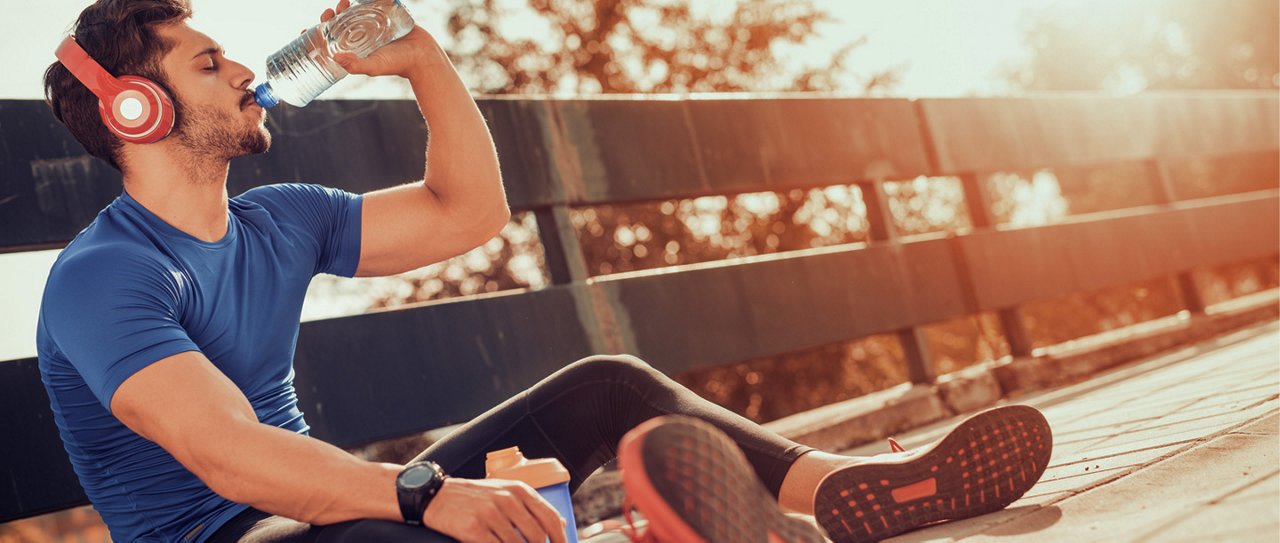How to exercise safely in the summer heat, and what to do if you're in trouble

One of the best parts of summer is the opportunity to be active outdoors – whether it’s running, cycling or hiking. It’s also the season for marathons, and when sports teams start practicing for fall. And unfortunately, every year it seems we hear tragic news of a football player losing their life on the field due to heat stroke, or a runner collapsing at a race.
But it’s not just athletes who need to be on the lookout for heat-related illness. Physical exertion in the heat can be dangerous, for all ages.
Anyone who spends time being active in the summer needs to be aware. This includes outside laborers such as roofers and landscapers; families visiting a theme park; and children playing outdoors.
Children have a more difficult time adjusting to the heat than adults and are less effective at regulating body heat. Take extra care with kids.
Why does exercising in hot weather pose a danger?
Exercising under extreme conditions can add significant stress to the cardiovascular system. The danger worsens if people are not adequately hydrated prior to starting exercise, wear heavy clothing, or are overweight or obese.
Heat-induced problems are common in football, where a number of issues combine – the weight of the padding adds to the work the person has to do, the added work increases the amount of heat build-up and increases sweating and dehydration and the padding traps the heat.
A similar condition occurs when people are overweight or obese. The added body fat lies over the muscles and effectively traps the heat from escaping.
Our bodies produce a considerable amount of metabolic heat during exercise. To reduce internal heat, blood is brought to the skin surface to be cooled. When we sweat, evaporation helps cool the underlying blood. With good environmental conditions, these mechanisms will adequately prevent the body temperature from rising more than about 2 to 3 degrees F, even during heavy exercise. Heat injuries usually occur when the body’s heat loss is compromised.
During exercise in the heat, regulating internal body heat is more difficult, and external heat from the environment may add to the total heat load.
This results in a higher heart rate than normal at any level of exercise.
A hot, humid environment is the most stressful one for exercising. When the air contains a large quantity of water vapor, sweat will not evaporate readily. Since sweat/evaporation is the most efficient mechanism for cooling the body, adequate cooling may not occur when it’s very humid.
Under these conditions, heat exhaustion and heat stroke become dangerous possibilities.
According to the Centers for Disease Control and Prevention, July is the month with the highest number of heat-related deaths reported (PDF).
What are the symptoms of heat exhaustion and heat stroke?
Muscle cramping might be the first sign of heat-related illness and may lead to heat exhaustion or stroke. Here’s how you can recognize heat exhaustion and heat stroke and what to do (CDC).
Symptoms of heat exhaustion
- Heavy sweating
- Weakness
- Pale, clammy skin
- Rapid, weak pulse
- Upset stomach or vomiting
- Fainting
- Dizziness
- Headache
- Muscle cramps
What you should do:
- Get to a cooler, air-conditioned place.
- Lie down and loosen clothing.
- Take a cool shower or bath, or apply cool, wet cloths to as much of the body as possible.
- Sip cool water.
- Get medical attention if symptoms get worse or last longer than one hour.
- If vomiting continues, seek medical attention immediately.
Symptoms of heat stroke
- High body temperature (above 103°F)
- Red, hot and dry skin (no sweating)
- Rapid, strong pulse
- A throbbing headache
- Dizziness
- Upset stomach
- Confusion
- Passing out
What you should do:
- Call 911 immediately – this is a medical emergency!
- Move the person to a shady area or indoors.
- Reduce the person’s body temperature by sponging with cool water, placing them in a cool bath or shower, or spraying with a garden hose.
- Do NOT give fluids.
- Continue efforts to cool the person until help arrives or his or her body temperature falls below 102 degrees and stays there.
How to stay safe while exercising in the heat
The American Council on Exercise and the Mayo Clinic offer the following tips for exercising in the heat:
Get acclimated – Begin exercising in the heat gradually. Becoming acclimated to exercising in the heat can take 1-2 weeks. Start by exercising for short periods of time each day. As your body adapts to the heat over time, gradually increase the length and intensity of your workouts.
Think light – Wear light-colored clothing if exercising in the sun, as white reflects heat better than other colors.
Wear breathable clothes – Always wear lightweight, well-ventilated clothing. Never wear impermeable or non-breathable garments.
Stay hydrated – Dehydration is a key factor in heat illness. Help your body sweat and cool down by staying well hydrated with water. Don’t wait until you’re thirsty to drink fluids. Avoid alcoholic drinks because they can actually promote fluid loss.
Know your fitness level – If you’re unfit or new to exercise, be extra cautious when working out in the heat. Your body may have a lower tolerance to the heat. Reduce your exercise intensity and take frequent breaks.
Keep air moving around you – Air movement is critical for adequate cooling and facilitates heat loss. Even in cool conditions, if there is limited air movement (such as exercising indoors on a treadmill or cycle), the air next to the body can become the same temperature as the body and saturated with water vapor from sweat.
Avoid midday sun – Exercise in the morning or evening, when it’s likely to be cooler outdoors. If possible, exercise in shady areas, or do a water workout in a pool. Always stop and come inside whenever you feel overheated. It’s important to teach children to do this as well.
Remember, heat-related illnesses are largely preventable. Take precautions, know the signs, and you and your family can enjoy a safe, fun summer outdoors.
Browse related articles


Blue Cross and Blue Shield of North Carolina does not discriminate on the basis of race, color, national origin, sex, age or disability in its health programs and activities. Learn more about our non-discrimination policy and no-cost services available to you.
Information in other languages: Español 中文 Tiếng Việt 한국어 Français العَرَبِيَّة Hmoob ру́сский Tagalog ગુજરાતી ភាសាខ្មែរ Deutsch हिन्दी ລາວ 日本語
© 2024 Blue Cross and Blue Shield of North Carolina. ®, SM Marks of the Blue Cross and Blue Shield Association, an association of independent Blue Cross and Blue Shield plans. All other marks and names are property of their respective owners. Blue Cross and Blue Shield of North Carolina is an independent licensee of the Blue Cross and Blue Shield Association.



